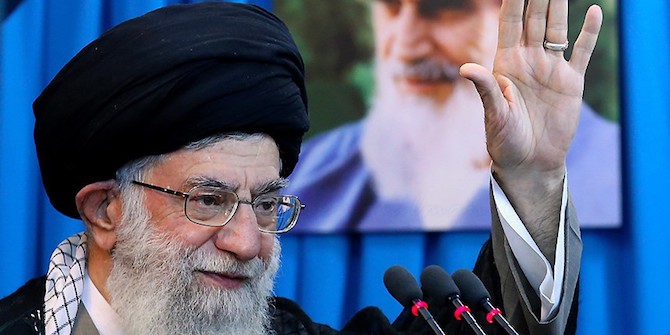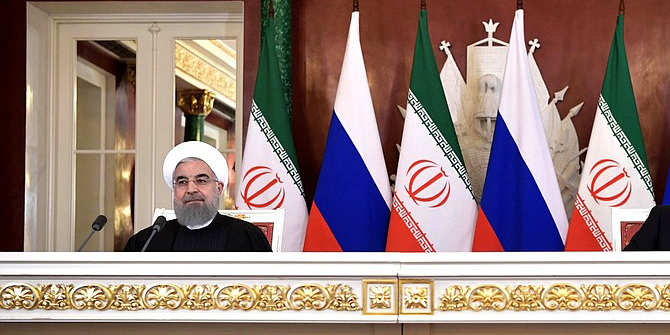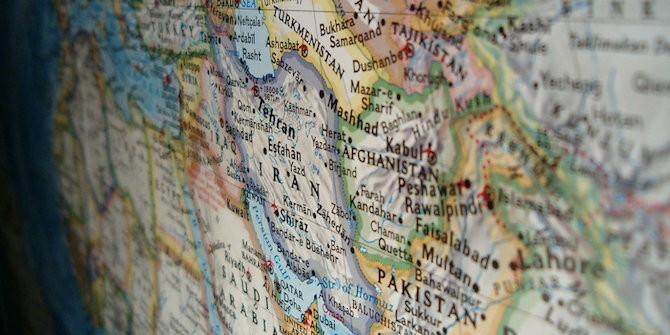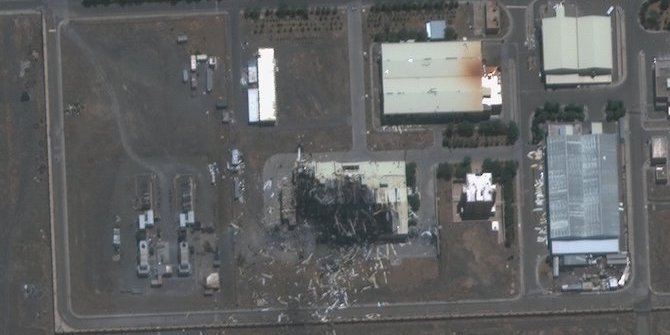by Mahmood Sariolghalam
This memo was presented part of a workshop organised by the LSE Middle East Centre looking at the Saudi–Iran rivalry in the region on 7 May 2018.

With the exception of oil price regulation, there is virtually no commonality of interest between Iran and Saudi Arabia. Regrettably, despite potential opportunities in petrochemical and industrial cooperation in both countries, structural incongruities, the lack of political will and deep cultural divergencies have kept the two Middle East giants apart. In contrast, Iran and Turkey understandably have converged, coordinating their policies in a wide range of areas. Unlike with Saudi Arabia, the Turkish-Iranian relationship is a non-zero-sum game. Iran and Turkey do not fear each other. Their identity, security, economic potential, religious orientation, cultural fabric and foreign policy initiatives barely lead to any conflict. Yet Iran and Saudi Arabia are placed exactly at loggerheads. The expansion of one leads to the contraction of the other.
Iran is an ancient state with a powerful sense of history, identity and statehood. Iranians unconsciously compare their historical significance with the date of birth of their neighbouring countries. Iran has not defined itself as a country interested in integrating with the global economy, whereas Turkey has done so since the early 1980s. If Iran had overcome its sense of identity and historical significance, there could have surfaced hundreds of opportunities for commercial, financial, economic and even security cooperation with Saudi Arabia. Iran’s openly dismissive attitude of the international system further distances any potential cooperation with the Saudi leadership. Furthermore, Iran dissociates economic relations from its foreign policy operations and therefore makes it almost impossible to build coalitions, alliances and unions with neighbouring countries. The raisons d’être of these two countries are so distinct that they cannot find any common mutually beneficial activity. In recent years, Saudi Arabia has become even more integrated with the global political and economic system while Iranian contemptuousness of the international order has grown further. In fact, one can focus on the divergent domestic political priorities of these two countries’ elites that lead to distinct political systems and policy outcomes. Neither can shape a regional order independently. They both need proxies, allies and extra-regional assistance to create and maintain a dominant regional order. Their internal structures and policy options also place them on opposite poles. It appears that they feel cooperation would lead to degradation. Iran’s deep sense of independence precludes any foreign policy coordination, cooperation or alignment with others in the region, consolidating a ‘Sinatra Doctrine’ in its foreign policy behaviour.
What is the impetus for Iran and Saudi Arabia to share power in the region? The Iranian state (rather than the government or its executive branch) places security above economic cooperation. It further values distance from the United States as the bedrock foundation of its national security. This is in deep contrast to the Saudi defence and security alliance with Washington. Iran’s decision-making structure is strikingly endogenous. The Saudi leadership is immersed in Washington and increasingly with Israel in its regional and global operations. This is enough ground to disentangle the two countries. Iran views separation as leading to more sovereignty and legitimacy; Saudi Arabia feels integration as a legitimisation and development mechanism.
These are structural asymmetries. They cannot be fixed with tactical solutions. Change will appear with attitudinal shifts, internal policy debates, regional rebalancing and American priorities.
Mahmood Sariolghalam is Professor of International Relations at the National University of Iran in Tehran (Shahid Beheshti). He specializes in international politics of the Middle East, Iranian foreign policy and political culture, and has published extensively in Farsi, Arabic and English, including ‘Sources of Continuity In Iran’s Foreign Policy’ in Gulf Politics and Economics in a Changing World (2014).
is Professor of International Relations at the National University of Iran in Tehran (Shahid Beheshti). He specializes in international politics of the Middle East, Iranian foreign policy and political culture, and has published extensively in Farsi, Arabic and English, including ‘Sources of Continuity In Iran’s Foreign Policy’ in Gulf Politics and Economics in a Changing World (2014).
Other posts in this Series:
- The Iranian Threat: The Saudi Perspective by Ali Shihabi
- Saudi Domestic Uncertainties and the Rivalry with Iran by Madawi Al-Rasheed
- Saudi Arabia and Iran: Mirrored Islamisms by John Jenkins
- Saudi Arabia, Iran and the Struggle for Supremacy in Lebanon and Bahrain by Simon Mabon
- Yemen: Background to the Manufacture of a Proxy War by Helen Lackner
- Saudi–Iranian Rivalry and the Impact on the Syrian Conflict by Julien Barnes-Dacey
- Weathering the Storm: Europe’s Iran Policy after America’s Withdrawal from the Nuclear Deal by Riccardo Alcaro






